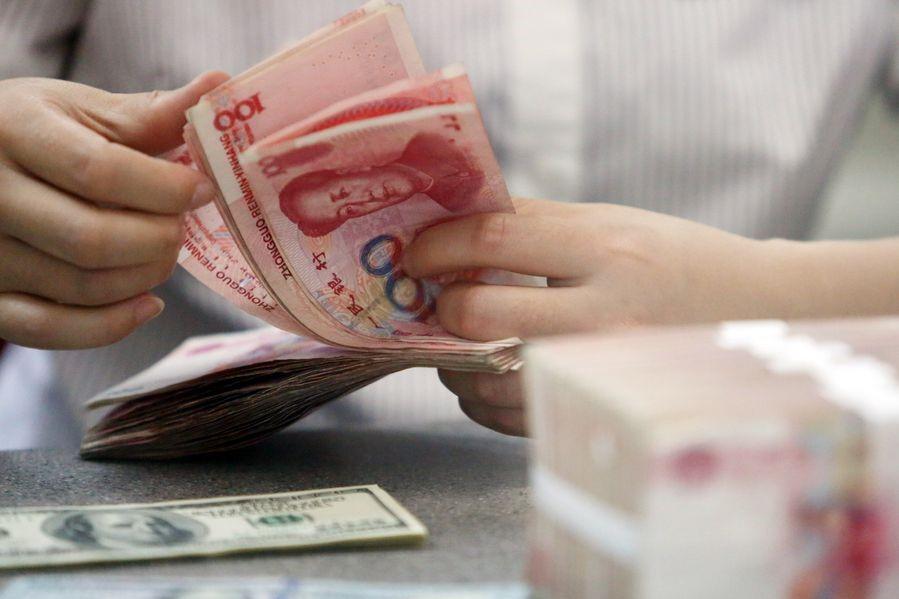Local govt debt 'uneven' but tolerable
 0 Comment(s)
0 Comment(s) Print
Print E-mail China Daily, June 6, 2023
E-mail China Daily, June 6, 2023

A worker counts Chinese currency renminbi at a bank in Linyi, East China's Shandong province. [Photo/Xinhua]
The Ministry of Finance has sharpened its focus on addressing local government debt risks, reassuring the market that there is ample scope for the country's finance system to counter challenges.
"At present, the main problem regarding local government debt is an uneven distribution (of debt), with certain regions facing higher debt risks and greater pressure repaying principal and interest," an unnamed official at the ministry said in an interview with Xinhua News Agency on Monday.
"We have urged relevant local authorities to fulfill their primary responsibility and effectively resolve government debt risks to firmly safeguard the bottom line of preventing any systemic risks," the official said.
To ensure the stable performance of local public finances, the official said the central government has stepped up efforts to allocate budgeted transfer payments to local governments, providing them with enough time to distribute and use the funds.
Despite the challenges faced by some regions, China's overall fiscal condition is healthy and sound with ample scope to address risks and challenges, the official said, adding that the country's aggregate debt level remains appropriate.
Official data showed that the country's total balance of local government debt stood at 35.07 trillion yuan ($4.92 trillion) as of the end of last year, within the limit approved by the National People's Congress, the country's top legislature, of 37.65 trillion yuan.
Also, China's statutory debt-to-GDP ratio came in at around 50 percent last year — relatively low by global standards and below the international warning line of 60 percent, experts said.
"Overall, China's fiscal situation is stable and healthy, with debt ratios and statutory debt limits standing within safe territory," said Shi Yinghua, a professor at the Chinese Academy of Fiscal Sciences.
Some regions have suffered from declining fiscal revenues and rising fiscal expenditures during the past three years due to COVID-19, said Shi. "This has led to increased pressure on fiscal balances in those regions, and fiscal risks have indeed been accumulating."
The remarks came after the debt sustainability of some localities attracted market attention this year, with local governments having worked actively to address such issues.
In April, the government of Southwest China's Guizhou province signed a cooperation agreement with State-owned China Cinda Asset Management Co Ltd, which manages distressed assets, seen as an effort to resolve local government debt risks in a market-oriented manner.
Looking ahead, experts said market-oriented and law-based mechanisms may be further leveraged to address local government debt issues, while reforms regarding local government financing vehicles — a key source of implicit government debt — should be sped up.
Wen Laicheng, a professor at Central University of Finance and Economics and a fiscal expert, called for efforts to accelerate the transformation of local government financing vehicles to contain the growth of implicit government debt, especially for those areas facing sluggish economic development.
The MOF said earlier this year that the country will roll out a mechanism to resolve debt defaults in a market-oriented and law-based manner to properly defuse any potential financial risks at the local government level.
Any debt risks will be fairly shared among debtors and creditors, and the principle of "no bailout from the central government" will be strictly adhered to, the ministry said.






Go to Forum >>0 Comment(s)